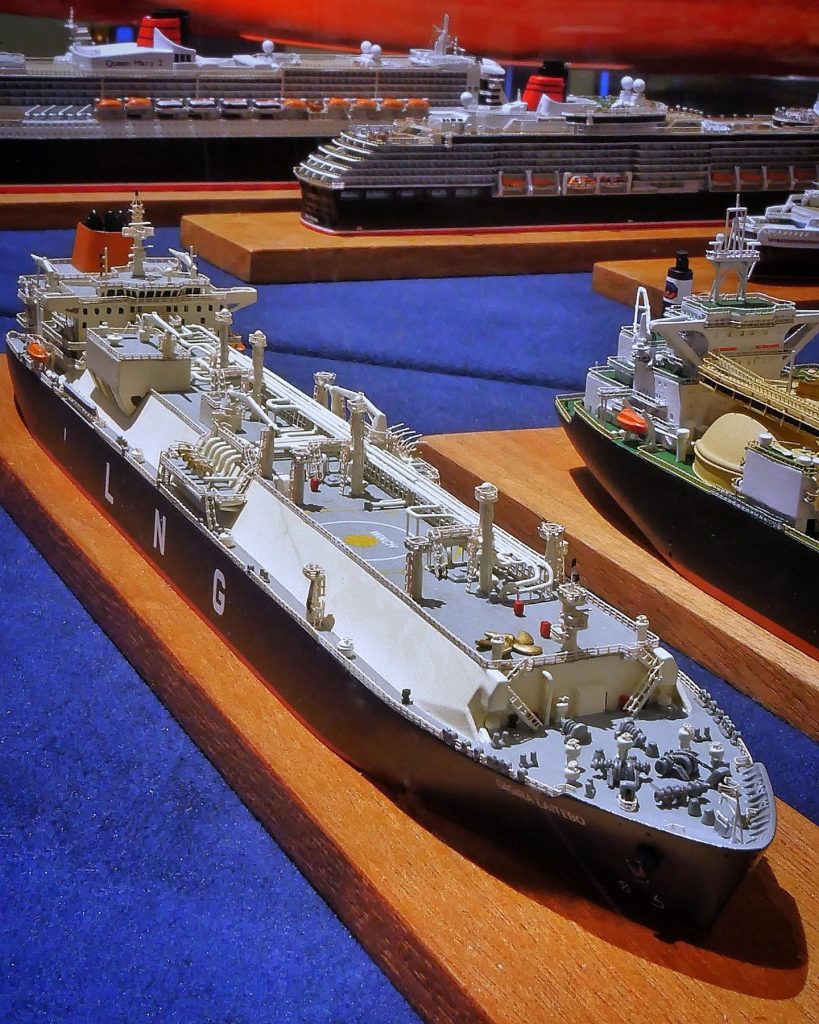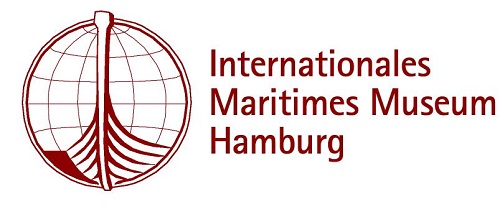
The LNG Gigira Laitebo (2010). This 1:1250 scale miniature of the „Gigira Laitebo“ is a work of the CSC workshop and is displayed on deck 9 of the museum.
This LNG (Liquefied Natural Gas) carrier was completed in 2010 after two years of work at Hyundai Heavy Industries‘ shipyard in Ulsan, Korea.
She and her sister ship are part of a series of new LNG carriers that have been built recently to meet the increasing demand for LNG as an energy source worldwide. The ship’s original name was „Abdelkader“ but was changed in 2014 to „Gigira Laitebo“, the name of a mythical underground fire in the southern highlands of Papua New Guinea. The sister ship of the „Abdelkader“, originally called „Ben Badis“, was also renamed at the same time. Her new name was „Spirit of Hela“ – Hela is a place in the same southern highlands.
Both ships were the first to participate in the PNG LNG Project – the Papua New Guinea Liquified Natural Gas Project. Organized by US-based ExxonMobil and Papua New Guinea-based Oil Search Limited (which became part of the Santos Group in 2021), this project was launched in 2010 and became operational in 2014. It produces the large natural gas deposits in the Southern Highlands and exports them mainly to China and Japan. The cost of the project was originally to be 16 billion Australian dollars and it was planned to produce 6.6 million tons of gas annually over a total period of 30 years. The project consists of production and processing facilities, a 700 km pipeline connecting Hela to the capital Port Moresby, and four large LNG tankers. „Gigira Laitebo“ and „Spirit of Hela“ were the first to enter service. Two more vessels were built specifically for the PNG LNG project: the „Papua“ (2015) and the „Kumul“ (2016). All four vessels are still in service for the project today.
The impact of the PNG LNG project on local communities and the environment, as well as the redistribution of the wealth generated by the project, are much and controversially discussed topics.
